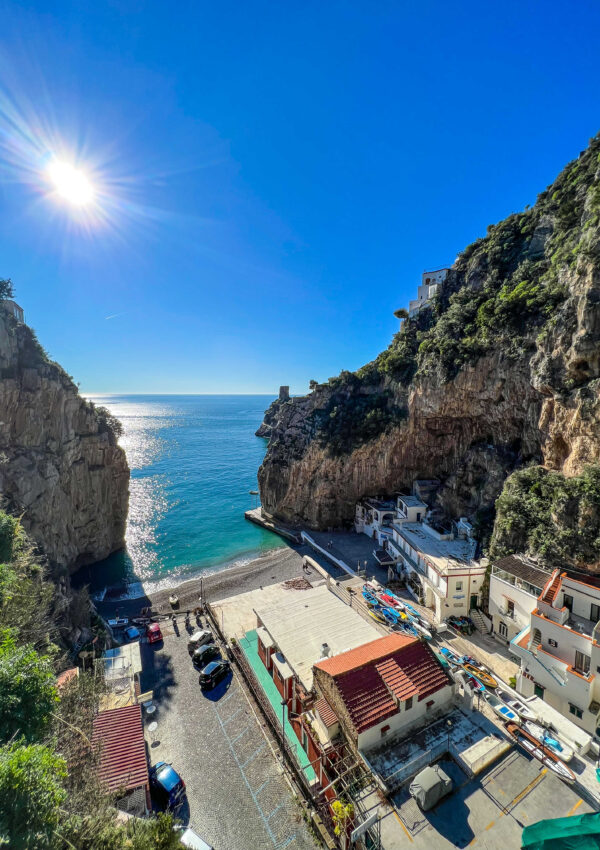Contents
- 1 What are the qualities of a good tour guide?
- 2 What makes a good tour guide?
- 2.1 Get all eyes on you from the very beginning.
- 2.2 Minimize shouting by using an amplifier.
- 2.3 Treat your guests’ attention with respect.
- 2.4 Shake up the stories with what you’re passionate about (within reason!)
- 2.5 Be prepared for the outside elements.
- 2.6 Reframe the dreaded “leave me a review” moment.
- 2.7 Hold your head up high. You’re giving an incredible tour!
This post may contain affiliate links! I will receive a commission, at no extra cost to you, if you purchase something recommended here.
Do you have your first tour coming up, or your first after a long break away? Maybe you’ve been guiding for a while, but still, feel like you’re struggling in some areas. Learning how to be a good tour guide is something just about everyone is always working on. Even guides who have been out there, walking the streets for years, can still learn something new about giving an engaging tour.
First, let’s focus on the basics:
What are the qualities of a good tour guide?
Comfortable with public speaking.
First and foremost, if you’re uncomfortable standing in front of a group and speaking with confidence, tour guiding is probably not the right path for you.
You have a passion for history and storytelling.
You have the opportunity to see some of the most famous, or obscure, pieces of history or adventure every day for your job, and then you have the privilege of sharing it. Even if you’ve looked up at the Empire State Building or down into the 9/11 Memorial hundreds of times, your guests are almost always experiencing it for the first time. Your passion for travel and enthusiasm for sharing this space will make a difference in tourists’ travel experience no matter how many times you experience it.
You’re a master at problem-solving.
Maybe there’s unexpected roadwork. Maybe you’ve stumbled into a parade on your usual route and need to be rerouted. Since I’m a tour guide in New York City, I’ve arrived at stops with my groups that were overtaken with a film set for New York City tv shows and movies countless times. It’s your job to refocus and redirect your guests in the moment without losing your composure.

The ability to remain calm under pressure.
A consequence of our job is that sometimes the world gets in the way. I’m talking about street harassers and other uninvited guests coming up to your group, an accidentally twisted ankle on a walking tour, or even something as bad as passports being stolen. Take a deep breath. Stay calm. Transform your mindset. Fall back on your training and work through the situation the best you can.
Excellent time management skills.
Often, guests plan tours into tightly packed itineraries, with nonrefundable timed tickets scattered throughout. It makes a huge difference for their experience if you end on time in the designated location.
A sense of humor.
Your guests didn’t choose your tour for a humourless history lesson. It’s your responsibility to infuse your stories with a lot of joy and a little bit of humor to keep their attention.
So then……….
What makes a good tour guide?
Get all eyes on you from the very beginning.
It seems straightforward, but it’s deceptive. You and your guests’ first moments together, right? I know, you have a million different thoughts running through your head……
Did I scan everyone’s passes? Has the office texted to say whether or not that party of five is anywhere nearby? Should I stay here for a few more minutes and kill time to wait for them or just get moving? Am I or my guests interrupting the flow of traffic for locals on the sidewalk?
With so many different things to consider, it’s no wonder the top of your tour might get neglected. But if a performer doesn’t start while the house lights are on, why are you starting your tour before everyone, including yourself, is focused on the tour?
Take a moment to collect your thoughts. Breathe. Then face your guests, and reclaim their focused attention. I usually look around the group while waving hello and introducing myself over and over again.
This way, they see a physical motion that catches their attention, I’m putting everyone at ease by acknowledging them one by one with bright, sunny energy, and I’m repeating my name for them to remember.
I’ve found this really works for me, but it might not work for you! The important thing is that you establish from the get-go that you are now, both proverbially and physically, taking the mic and starting the tour.
Speaking of which……..
Minimize shouting by using an amplifier.
I’ve met so many guides that had to stop leading tours because the strain on their vocal cords started to cause permanent damage. As much as we might all love our jobs, no one loves their jobs enough to cause permanent harm to their body.
To combat the vocal fatigue, make sure you use an amplifier, especially in high-traffic areas. I’ve had my Croove Rechargeable Voice Amplifier for three years. Through wind and rain, it’s never failed. These handheld audio guides also have a ridiculously long battery life–even after years of near-daily use; I only had to charge my Croove amplifier once every 3 or 4 weeks.
Treat your guests’ attention with respect.
The Golden Rule: Treat others the way you want to be treated.
If you’re treating your guests’ coveted attention with respect, they will, in turn, respect that you’ve claimed it. What does that look like exactly? When you round everyone up at each stop, give them and the story your undivided attention. Supply them opportunities to ask questions.
For some wacky reason, these guests decided that of all the tours offered on all the tourism websites, they picked yours on your tour topic. Take this as an opportunity to build rapport with your travelers. When they are actively listening to you, engage them with the stories you’ve dedicated your profession to.
This is particularly true if you have children on your tours.
Shake up the stories with what you’re passionate about (within reason!)
Especially if you’re giving something like a tour of historic streets in New York City, the information can become repetitive. And your guests did not book your tour today, probably waking up at some ungodly hour to maneuver through a city they barely know to meet you at the starting point, for them to listen to what feels like a reciting of their high school history textbook.
Once you’ve learned the facts, take some time to infuse your stories with what’s on-brand YOU. Do you moonlight as a stand-up comic? Take some opportunities to infuse your stories with humor. Are you fascinated by architectural history? Bring it into your tours by pointing out the architectural styles of historic buildings along your route.
Even if it’s not explicitly part of your tour if you’re passionate about what you’re sharing and the way you’re sharing it, guests will respond positively.
Be prepared for the outside elements.
If you’re lucky enough to be a tour guide inside, I salute you. But for the rest of us outdoor guides, we need to be prepared for all the weather choices Mother Nature will throw at us.
In the spring, I’ve kept extra plastic ponchos in my backpack for guests caught in an impromptu rainstorm. In the winter, I’ve carried packets of hand warmers, ready to be handed out to whoever needed one.
While that might be a bit extra for you, the main takeaway here is keeping your guests comfort in mind. If it’s sunny, try keeping the sun behind your guests, so they don’t have to squint to see you or the sites they’re there to see. If rain is projected in the forecast, plan out alternative spaces to stand that have coverage or know where the best places to find an umbrella are along your route.
Even more so, make sure that you leave the house prepared for whatever the weather might bring. There’s nothing worse than shivering through a tour because you didn’t wear enough layers.
Reframe the dreaded “leave me a review” moment.
We’ve all felt it. The ickiness of asking your guests to remember to leave you a great review after the tour. But since this moment is pivotal in your tours’ success, from a technical standpoint, more great reviews equal more visibility on Get Your Guide, Viator, and wherever else your tour are listed. It’s what we would call a necessary evil.
If you feel comfortable about it, ask your family and friends how they want to be told. Then test it out and put your own spin on it. You’ve presumably just spent (sometimes waaayyy) over an hour with your guests, making them love you and your storytelling. Let this be an opportunity for them to give back for when you’ve given so much of yourself to them today.
The same is true with your tip reminder, if that’s something you’re comfortable including in your closing.
PSA TO ALL GUESTS: TIP YOUR TOUR GUIDES!
Hold your head up high. You’re giving an incredible tour!
Remember, there are hundreds of people who could NEVER do what you do! Stage fright, memorization, the lack of desire to work with the public, or live in a heavy tourism area, the list goes on.
Just like actors say that you are the only person who can tell a story YOUR way, the same goes for being an exceptional tour guide. Only YOU can put the unique spin on the stories and history you’re so passionate about sharing with your guests.
And while, of course, we all want guests to go home and be able to repeat with precision the facts we’ve shared with them; moreover, they’re going to remember the way you made them feel on your tour. Make your guests fall in love with your city, and make your guests fall in love with taking guided tours, no matter where they go.
What are your tips for how to be a good tour guide?
Read More:
- The Best Tours Around the World
- Your Guide to the Best Free Things To Do in New York City
- Your Guide to Navigating the New York City Subway System
- Your Guide To New York City Museums Free Admission









